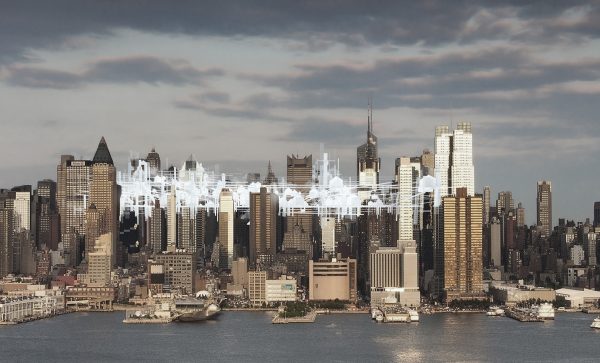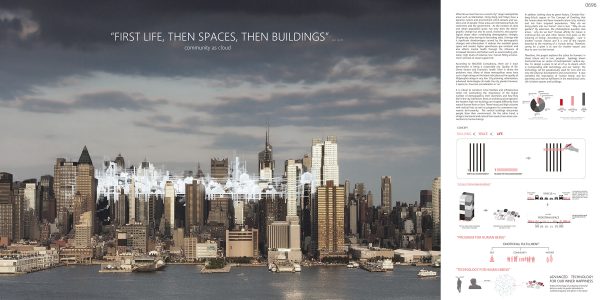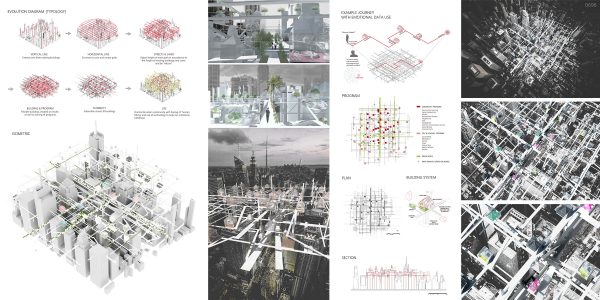Honorable Mention
2018 Skyscraper Competition
Keon Hee Lee, Dong Hyun Kim, Elicia Jiwoo Eom
Australia, South Korea

What do we miss from our current city? Large metropolitan areas such as Manhattan, Hong Kong and Tokyo have a dynamic culture and environment which attracts and sustains a lot of people. These areas are international hubs for commerce and the government. As the number of cities and urban population grow, not only does the demographic change but also its social, economic and psychological shape alters constituting demographics changes. Despite big cities having its fascinating sides, it brings with it significant disadvantages caused by the demographic changes and urbanization. It reduces the available green space and creates higher greenhouse gas emission and also affects mental health through the influence of increased stressors and factors such as overcrowding, pollution, high levels of violence, less ‘human fitting environment’ and lack of social support etc.
According to ARCADIS Consultancy, there are 3 main benchmarks in being a sustainable city. Quality of life, Green factors and Economic health. Here is where the problems rises. Many of those metropolitan areas have such a high ratings on the latest indicators yet the quality of life(people) ratings is very low. City planning, urbanization, advanced technologies all made the city greater however, it seems to have less consideration in ‘us’.
It is critical to construct more facilities and infrastructure whilst not overlooking the importance of the higher number of demographics, their diversities and how they feel in the city. Moreover, from an architectural perspective, the modern high-rise buildings are shaped differently from natural human form or lives. Those heavy and high volumes with vertical lines as well as programs for commerce represents de-humanity. The vertical buildings disconnect people from their environment. On the other hand, a village’s horizontal and natural form seems have more connections to human beings.
In addtion, looking close to green factors, Christian Norberg-Schulz argues In The Concept of Dwelling that the human draw and favor towards nature is by instincts and not from acquired experiences. ‘Why do we bring plants into our home?’ and in turn ‘ Why do we garden?’ By extension, the philosophical question also arises, ‘why do we live?’ Human affinity for nature is instinctual but are also other factors that gives us the meaning of ‘being’. According to Heidegger, ‘care’ is another human instinct and it is one of the natures essential to the meaning of a ‘human being’. Therefore, caring for a plant is to care for ‘mother nature’ and thus to care is to be human.
Therefore, this project explores the ‘place for humans’ in closer future and in turn, proposes typology drawn horizontal lines on center of metropolitans’ vertical skyline. To design a place to let all of us to dream which is incorporating with technology and our ‘being’. The technology will be paradoxically used for lives and not only the physical development and convenience. It also considers the importance of ‘human being’ and fundamental and internal fulfillment in the mechanical cities. Life is before spaces and buildings.


This work is licensed under a Creative Commons License permitting non-commercial sharing with attribution. https://creativecommons.org/licenses/by-nc-nd/4.0/



